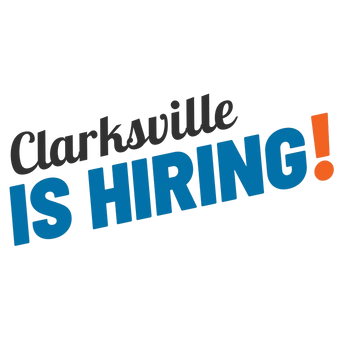Recreation Programmer

City of Clarksville
This job is no longer accepting applications
See open jobs at City of Clarksville.See open jobs similar to "Recreation Programmer" Clarksville-Montgomery County EDC.Description
- GENERAL STATEMENT OF JOB
Incumbent plans, implements, and evaluates recreational activities and creates accurate online activity descriptions for patron registration utilizing recreational software. Responsibilities may include determining recreational offerings; supervising seasonal part-time staff; scheduling the use of facilities; monitoring a budget; maintaining records; and preparing operational reports.
***PLEASE NOTE: THIS POSITION WILL PRIMARILY MANAGE THE NEW OUTDOOR RECREATION PROGRAM AND WILL BE REQUIRED TO WORK EVENINGS, WEEKENDS, AND SOME HOLIDAYS. KNOWLEDGE AND SKILL IN RECREATION PROGRAMMING IS REQUIRED. CERTIFIED PARKS AND RECREATION PROFESSIONAL (CPRP) DESIGNATION AND KNOWLEDGE OF AND EXPERIENCE USING RECREATION SOFTWARE ARE PREFERRED. THIS POSITION WILL REMAIN OPEN THROUGH SEPTEMBER 6, 2024, OR UNTIL FILLED.*** Example of Duties
-
SPECIFIC DUTIES AND RESPONSIBILITIES
Essential Functions:
Plans, implements, instructs, and/or supervises various recreation programs, activities, and special events for youth, adults, and families.
Tracks and evaluates programs through performance measures, statistics, and evaluations.
Creates accurate programming records and reports using the department’s recreation management software and monitors program registration by the public.
Communicates with registrants as needed and addresses customer service issues both electronically and in person.
Assists in publicizing events and programs.
Develops and maintains a comprehensive outreach program to attract potential program participants.
Develops and maintains contact with various community groups, schools, and organizations.
Prepares, monitors and tracks programming operating budget.
Solicits business sponsors, vendors, and donations as needed.
Maintains financial records and tracks program income and expenditures.
Purchases supplies or equipment needed for programs.
Performs other duties of a similar nature or level.
Performs other related work as required.
Typical Qualifications
- MINIMUM EDUCATION AND TRAINING
Education and Experience
High school diploma or GED equivalent.
Four years of experience in Recreation Programing.
- An equivalent combination of education and experience sufficient to perform the job's essential duties.
License and Certifications
Possession of a valid driver’s license.
Certified Parks and Recreation Professional (CPRP), preferred.
First Aid/CPR within nine (9) months of hire.
Supplemental Information
-
MINIMUM QUALIFICATIONS AND STANDARDS REQUIRED
Knowledge, Skills, and Abilities:
Knowledge of:
Intermediate knowledge of customer service principles.
Recreational programming planning principles and practices.
Applicable age-appropriate activities, programs, and material.
Basic budgeting principles.
Recordkeeping practices and principles.
Computers and related software applications.
Event planning techniques.
Skill in:
Providing exceptional customer service.
Using computers and related software applications.
Planning, developing, supervising, and managing programs and/or events.
Monitoring budgets.
Overseeing recreation program sites, facilities, and equipment.
Developing promotional materials.
Prioritizing and assigning work.
Monitoring and evaluating employees.
Communication, interpersonal skills as applied to interaction with subordinates, coworkers, supervisor, the public, etc. sufficient to exchange or convey information and to receive work direction.
Physical Requirements:
The work is medium work which requires exerting up to 50 pounds of force occasionally, and/or up to 20 pounds of force frequently to or constantly to move objects. Additionally, the following physical abilities are required:
Balancing: Maintaining body equilibrium to prevent falling while walking, standing, or crouching on narrow, slippery, or erratically moving surfaces. The amount of balancing exceeds that needed for ordinary locomotion and maintenance of body equilibrium.
Climbing: Ascending or descending ladders, stairs, scaffolding, ramps, poles, and the like, using feet and legs and/or hands and arms. Body agility is emphasized.
Crawling: Moving about on hands, knees, hands, and feet.
Crouching: Bending the body downward and forward by bending leg and spine.
Feeling: Perceiving attributes of objects, such as size, shape, temperature, or texture by touching with skin, particularly that of fingertips.
Fingering: Picking, pinching, typing, or otherwise working, primarily with fingers rather than with the whole hand as in handling.
Grasping: Applying pressure to an object with the fingers and palm.
Handling: Picking, holding, or otherwise working, primarily with the whole hand.
Hearing: Perceiving the nature of sounds at normal speaking levels with or without correction. Ability to receive detailed information through oral communication, and to make the discrimination sound.
Kneeling: Bending legs at knee to come to a rest on knee or knees.
Lifting: Raising objects from a lower to a higher position or moving objects horizontally from position-to-position. It occurs to a considerable degree and requires substantial use of upper extremities and back muscles.
Mental Acuity: Making rational decisions through sound logic and deductive processes.
Pulling: Using upper extremities to exert force to draw, haul or tug objects in a sustained motion.
Pushing: Using upper extremities to press against something steady to thrust forward, downward, or outward.
Reaching: Extending hand(s) and arm(s) in any direction.
Repetitive Motion: Substantial movements (motions) of the wrist, hands, and/or fingers.
Speaking: Expressing or exchanging ideas by means of the spoken word including the ability to convey detailed or important spoken instructions to other workers accurately and concisely.
Standing: Particularly for sustained periods of time.
Stooping: Bending body downward and forward by bending spine at the waist. It occurs to a considerable degree and requires full motion of the lower extremities and back muscles.
Talking: Expressing or exchanging ideas by means of the spoken word including those activities in which they must convey detailed or important spoken instructions to other workers accurately, loudly, or quickly.
Visual ability 1: sufficient to perform an activity like preparing and analyzing data and figures; transcribing; viewing a computer terminal; and/or extensive reading.
Visual ability 3: sufficient to determine the accuracy, neatness, and thoroughness of the work assigned or to make general observations of facilities or structures.
Visual ability 4: sufficient to operate motor vehicles and/or heavy equipment, both day and night.
Walking: Moving about on foot to accomplish tasks, particularly for long distances or move from one work site to another.
This job is no longer accepting applications
See open jobs at City of Clarksville.See open jobs similar to "Recreation Programmer" Clarksville-Montgomery County EDC.
